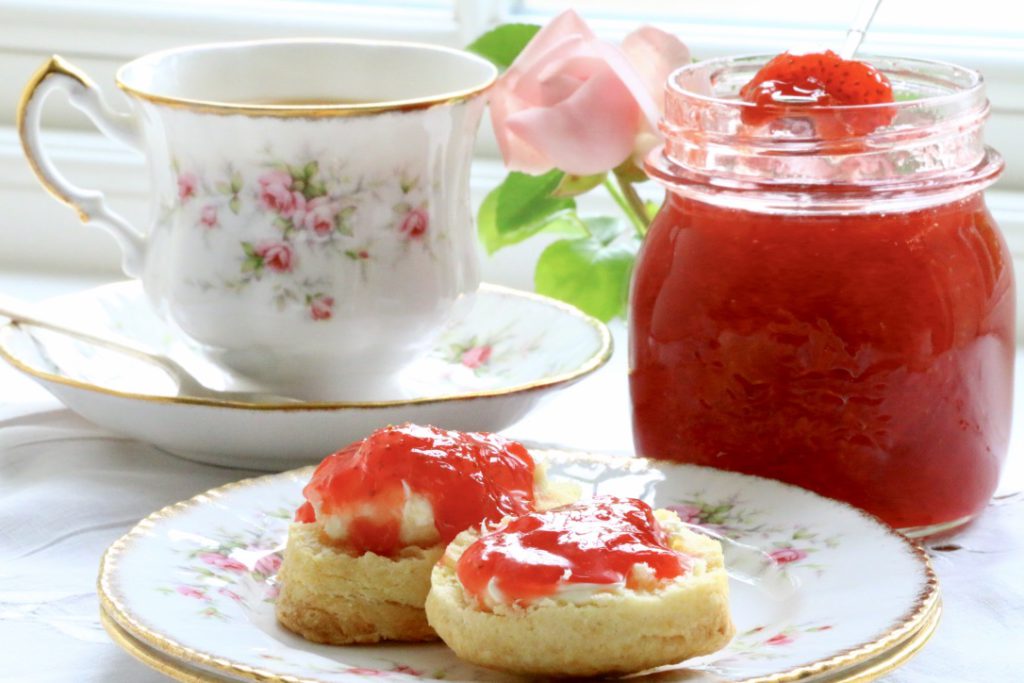 It’s June, and the roses in my English garden are putting on their best show in years (all that May sunshine!). The English strawberries with real flavour are also starting to come in, with a glut to follow once June really gets going. This seasonal coincidence makes for some of the most charming culinary combos in the entire year’s growing calendar.
It’s June, and the roses in my English garden are putting on their best show in years (all that May sunshine!). The English strawberries with real flavour are also starting to come in, with a glut to follow once June really gets going. This seasonal coincidence makes for some of the most charming culinary combos in the entire year’s growing calendar.
Strawberry rose jam is a beautiful, fragrant, utterly delicious, jam. When added in the right amount, the rose intensifies the strawberry flavour rather than masking it and adds a floral finish, making for a delightful complexity. With scones, it makes the perfect cream tea for summertime, and will remind you of rose gardens once the blooms have faded. (It’s also the jam I use for this elegant chocolate rose cake.)
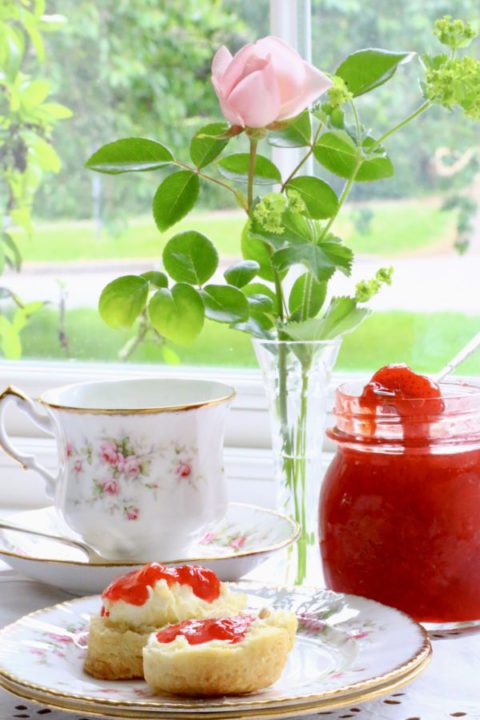 Making a small batch is easy, either with a bunch of your own fragrant rose petals, or with the judicious addition of rose water: the distillate of rose petals. A little goes a long way, as it’s highly concentrated (one kilo of petals is needed for every litre of water used in the distillation process). I like it best when the rose element to this jam (or any other rose-flavoured dish) is most detectable on the finish, adding a subtle complexity. The rose flavour does accumulates the more you eat of it, so this is a way to avoid over-doing it, while still getting the beautiful essence of rose. The best way to control the balance is to add a little at a time and keep tasting.
Making a small batch is easy, either with a bunch of your own fragrant rose petals, or with the judicious addition of rose water: the distillate of rose petals. A little goes a long way, as it’s highly concentrated (one kilo of petals is needed for every litre of water used in the distillation process). I like it best when the rose element to this jam (or any other rose-flavoured dish) is most detectable on the finish, adding a subtle complexity. The rose flavour does accumulates the more you eat of it, so this is a way to avoid over-doing it, while still getting the beautiful essence of rose. The best way to control the balance is to add a little at a time and keep tasting.
The strength and quality of rose water varies widely. Some is manufactured using synthetic flavourings, so go for the real thing. A new bottle of rose water will also be much stronger than an old one, even if the old one still smells fragrant. (My most recent batch of jam required only ½ teaspoon of newly opened rose water, and I’d had to use over 2 tablespoons to get the same effect from an old bottle.)
When using fresh rose petals, use unsprayed, clean petals – the more fragrant the better. The leaves of the scented pelargonium, sometimes referred to as rose geranium, can also be added whole to the strawberries and sugar when macerating, and removed once the jam is cooked, before sealing. Attar of Roses is the most intensely rose-flavoured cultivar.
We’ve become accustomed to having strawberries nearly year ’round. The UK commercial season for strawberries is five to six months now, due to poly tunnel technology, when in 1990 it was six weeks: the duration of the field-grown season. For me, there is still nothing like the berries grown under the summer sun, just at the time when roses are also at their peak. So putting the two together really does celebrate the best of the best.
Read more here about the history and uses of the rose in cookery.
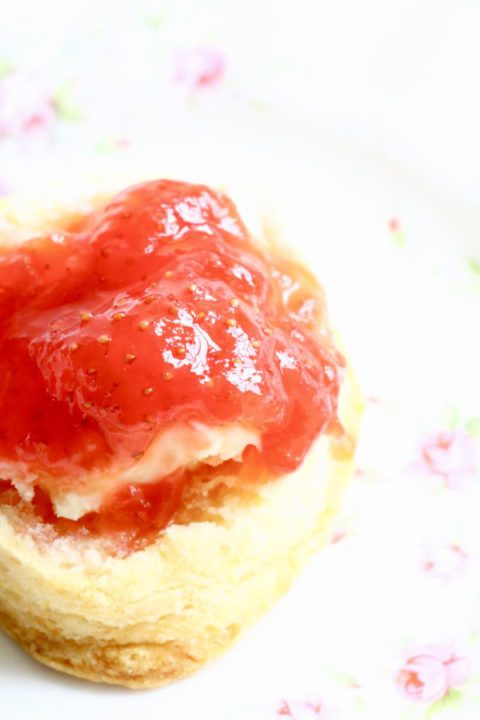 RECIPES
RECIPES
Strawberry rose jam
This recipe makes four 285g jars/10-ounce jars
This is a “confiture extra” recipe, meaning it uses 60% fruit and 40% sugar, instead of the more usual 50/50 proportions. Using less sugar means the fruit flavours dominate, and it also makes for a looser set, although this method uses ‘jam sugar’, which contains pectin, to ensure the jam has a lovely spooning consistency.
Strawberries are naturally low in pectin, so the added pectin in the jam sugar allows it to set without needing to be cooked too long. This goes a long way to retaining the fresh flavour and bright colour of the strawberries. Lemon juice also works as a natural setting agent, and helps compensate for the decrease in sugar.
You can make a small batch of jam with any amount of strawberries you have: use two-thirds the weight of the berries in jam sugar: i.e., 60% hulled fruit to 40% sugar.
Ingredients:
- 1 kilo (2.2 pounds) strawberries, weighed after rinsing and hulling (buy about 100g over this to allow for wastage)
- 660g (3 1/3 cups) jam sugar (sugar ready-mixed with pectin)
- the juice of half a lemon
- Optional: two handfuls of unsprayed, very fragrant rose petals
- ½ teaspoon to 2 tablespoons rose water: start with ½ teaspoon and keep tasting!
Directions:
- Sterilise jars, lids, ladle and funnel. Put 2 or 3 small plates in the freezer to use for testing the jam’s setting point.
- Halve or quarter the strawberries into a large bowl and add the jam sugar and lemon juice. Crush a few berries and leave some uncrushed. Add the rose petals, if using. Cover the bowl and let the strawberries macerate for an hour to soften the sugar and release the juices of the fruit. Alternatively, leave refrigerated overnight; this helps to keep the fruit intact if you like large strawberry pieces in your jam.
- Transfer the macerated fruit mixture to a jam pan, Dutch oven, or other large saucepan that’s deep enough to cook the fruit without it boiling over.
- Heat the fruit over medium-high heat, stirring frequently, until the sugar has completely dissolved.
- Increase the heat and quickly bring the mixture to a hard boil, stirring constantly, and scraping the bottom of the pan to ensure it doesn’t scorch. Cook for 5-8 minutes, or until the bubbles start to get larger and the jam begins to drip more slowly from the spoon. Test the setting point by spooning a small quantity onto one of the chilled plates, letting it cool for about 30 seconds, and then pushing your finger through it. If it wrinkles, the jam is done.
- If you’re using the rose water to flavour your jam, add it now while the jam is still hot, starting with ½ teaspoon. Stir it through and take a spoonful to taste, letting it cool first. Add more rose water as needed in ¼ or ½ teaspoon increments until you like the flavour of the jam. You should be able to detect the rose flavour on the finish, but it should not overpower the strawberries.
- Ladle the still-hot jam into the sterilised jars with the help of a funnel, leaving behind any pink foam. Put on the lids tightly; don’t tighten the lids further after the jars have cooled, or you could break the seal.
- Once opened, the jam is best refrigerated, and will keep for several weeks.
- Serve with whipped or clotted cream on scones (recipe below). In Devon it is traditional to put the cream on first, and cover it with the jam. In Cornwall they do the opposite: jam on first, then cream.
Cream scones
Makes twelve 5cm/2-inch scones
These are very light and deliciously rich, and they stay intact when covered with cream and jam. Use a soft “00” flour if you can for extra lightness; and use only enough cream to make the dry ingredients stick together; excess moisture makes scones dense and heavy.
As with any pastry, use as light a touch as you can to avoid activating the gluten strands which make the scones tougher and liable to shrinkage.
Ingredients:
- 260g (2 cups sifted before measuring) soft “00” flour, or use plain/all-purpose
- 25g sugar (2 slightly rounded tablespoons)
- 2½ teaspoons baking powder
- ½ teaspoon cooking salt
- 40g (3 tablespoons) cold unsalted butter, cubed
- 240ml double cream (1 cup heavy cream), plus 1 extra tablespoon if needed
- Egg wash for glazing, or use a little more cream, or milk
Directions:
- Heat oven to 200C/400F. Line a baking sheet with parchment paper.
- In a large bowl, sift together the dry ingredients.
- Rub the butter into the dry ingredients with the tips of your fingers until well incorporated, with a few petits-pois-sized pieces remaining.
- Add the 1 cup of cream and stir it in lightly just until the ingredients are combined and stick together when you pinch: the edge of a dinner knife is good for doing this job. If the mixture is still too crumbly, add the extra 1 tablespoon of cream. Gather it together into a disc. The mixture should stick together without crumbling, but should not be damper than needed to achieve this.
- Lightly pat or roll the dough into a circle with an even thickness of about 2.5cm (1 inch).Use a floured biscuit cutter to cut out as many scones as you can from the circle, pushing from the bottom to release them; place them on the lined baking tray. Lightly press the scraps together without folding or excessive handling and keep cutting more scones, re-shaping as needed, until you’ve used all the dough.
- Brush the tops (only) of the scones with a wash made of a beaten egg, or with a little extra cream (or some milk). Use your fingertips if you don’t have a pastry brush.
- Bake the scones for about 15-18 minutes, turning once for even browning.
- Cool on a rack and serve as soon as possible. Baked scones can be refreshed in a medium-hot oven for 3 minutes, or 10-15 seconds per scone in the microwave. They can also be frozen; defrost while still wrapped so condensation stays on the outside.
 Other rose recipes on Crumbs on the Table:
Other rose recipes on Crumbs on the Table:
- Chocolate rose cake, in “Cook it with flowers”
- Elderflower rose cooler, in “Midsummer Night’s Potion”
- Rose geranium sponge cake
Other strawberry recipes on Crumbs on the Table:
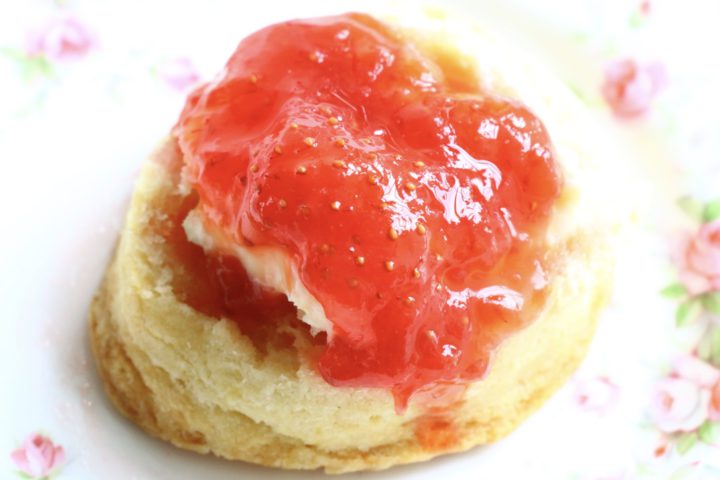

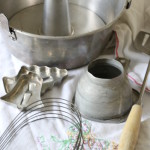

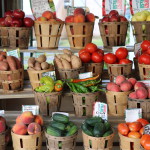
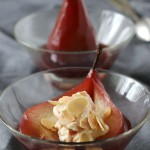
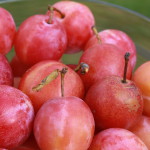
 Tour D’Argent: a remembrance of things past at today’s prices
Tour D’Argent: a remembrance of things past at today’s prices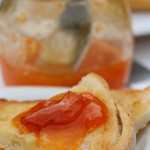 Apricots, les abricots
Apricots, les abricots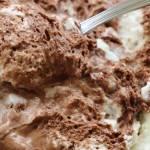 I used to cook in a piggery
I used to cook in a piggery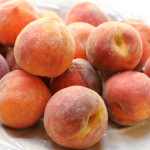
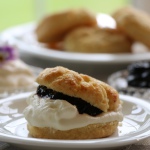
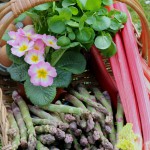


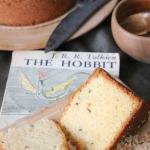 Seed cake and story
Seed cake and story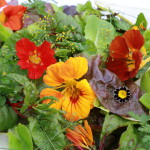
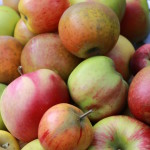
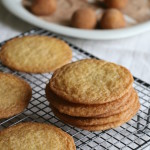
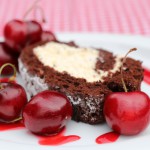

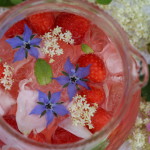
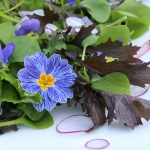

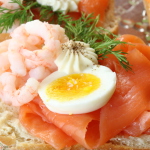
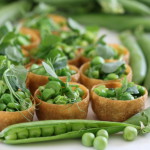

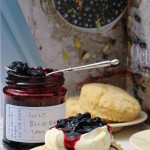
 Easter is late this year
Easter is late this year
Leave a Reply